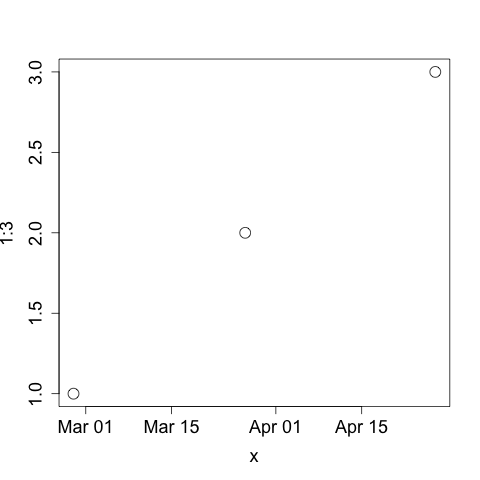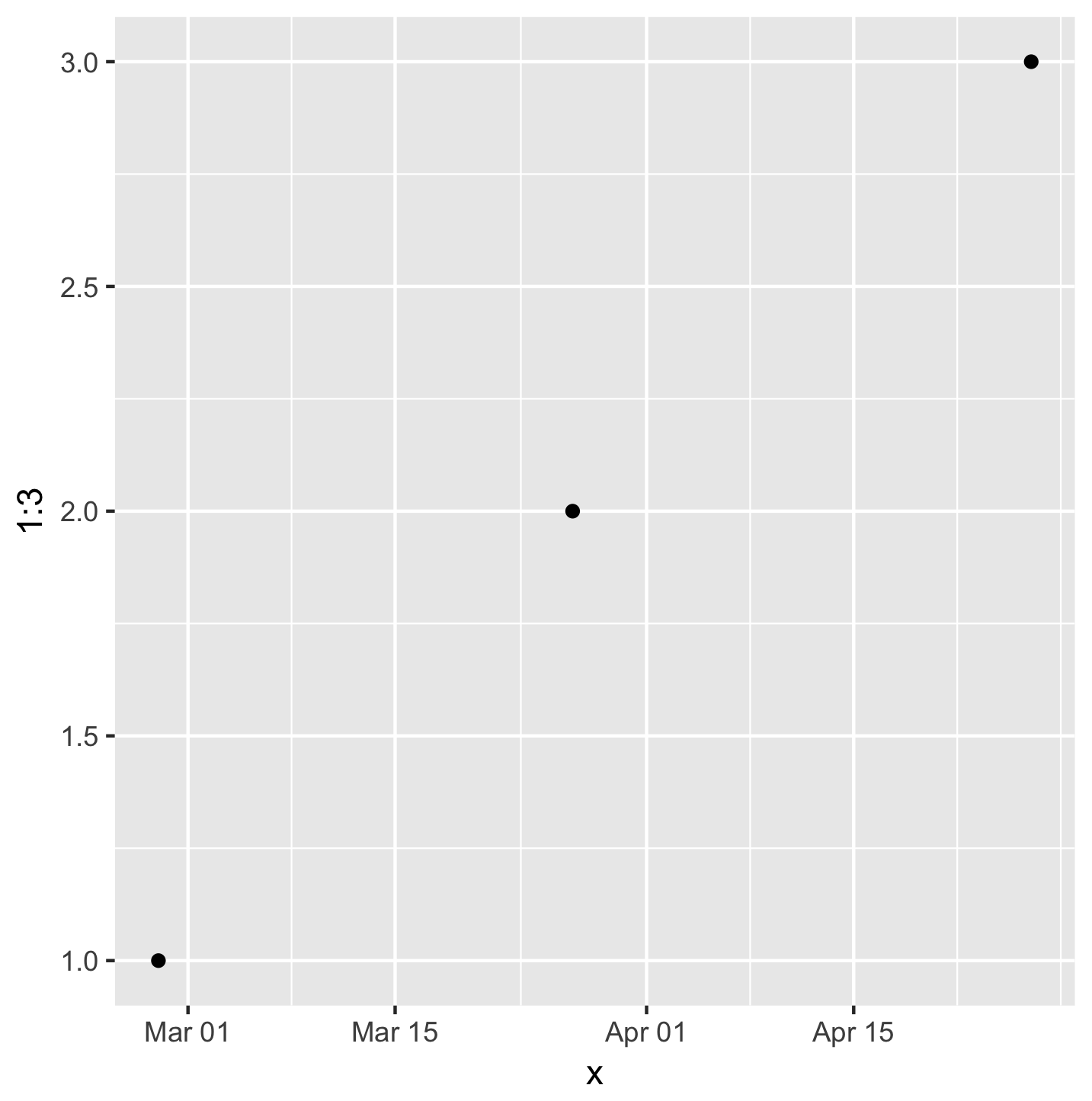Why use dates?
Working with Dates and Times in R

Charlotte Wickham
Instructor
Dates act like numbers
Date objects are stored as days since 1970-01-01
as.Date("2003-02-27") > as.Date("2002-02-27")
TRUE
as.Date("2003-02-27") + 1
"2003-02-28"
as.Date("2003-02-27") - as.Date("2002-02-27")
Time difference of 365 days
Plotting with dates
x <- c(as.Date("2003-02-27"),
as.Date("2003-03-27"),
as.Date("2003-04-27"))
plot(x, 1:3)

Plotting with dates
x <- c(as.Date("2003-02-27"),
as.Date("2003-03-27"),
as.Date("2003-04-27"))
library(ggplot2)
ggplot() +
geom_point(aes(x = x, y = 1:3))

R releases
releases
# A tibble: 105 x 7
major minor patch date datetime time type
<int> <int> <int> <date> <dttm> <time> <chr>
1 0 60 NA 1997-12-04 1997-12-04 08:47:58 08:47:58 patch
2 0 61 NA 1997-12-21 1997-12-21 13:09:22 13:09:22 minor
3 0 61 1 1998-01-10 1998-01-10 00:31:55 00:31:55 patch
4 0 61 2 1998-03-14 1998-03-14 19:25:55 19:25:55 patch
5 0 61 3 1998-05-02 1998-05-02 07:58:17 07:58:17 patch
6 0 62 NA 1998-06-14 1998-06-14 12:56:20 12:56:20 minor
7 0 62 1 1998-06-14 1998-06-14 22:13:25 22:13:25 patch
8 0 62 2 1998-07-10 1998-07-10 11:13:45 11:13:45 patch
9 0 62 3 1998-08-28 1998-08-28 09:02:19 09:02:19 patch
10 0 62 4 1998-10-23 1998-10-23 12:08:41 12:08:41 patch
# ... with 95 more rows
Let's practice!
Working with Dates and Times in R

